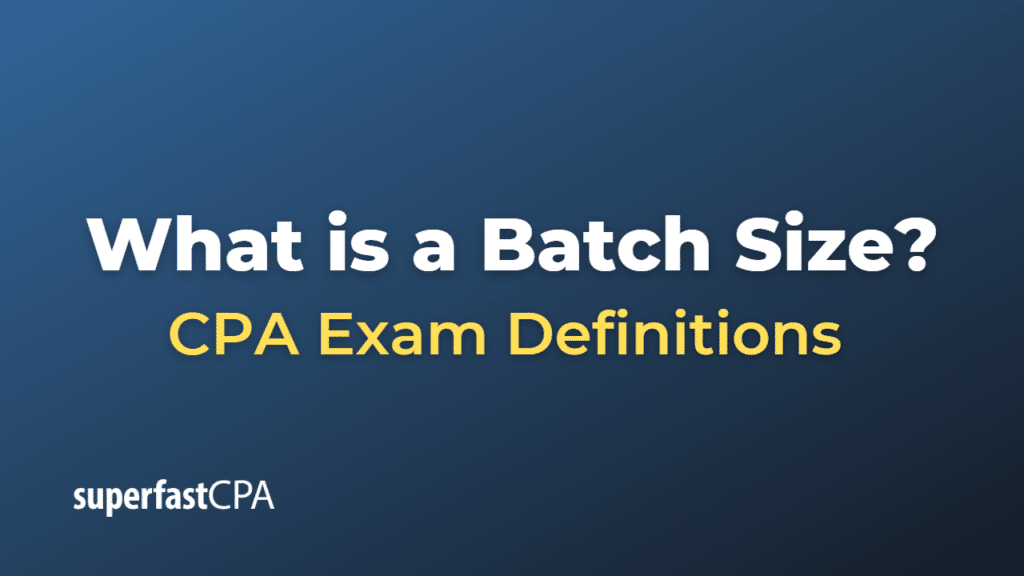Batch Size
Batch size, in the context of manufacturing and production, refers to the number of units or items produced in a single production run or batch. Manufacturers often use batch production when producing goods that require similar processes or machinery, as it allows for greater efficiency and cost savings compared to producing items individually or continuously.
Batch size is an important factor in production planning and inventory management, as it can impact production costs, lead times, and inventory holding costs. Companies must carefully determine the optimal batch size to balance the trade-offs between setup costs, production costs, and inventory carrying costs.
For example, producing larger batch sizes may lead to economies of scale and lower per-unit production costs. However, it can also result in increased inventory holding costs and potential obsolescence if demand for the product decreases. Conversely, smaller batch sizes may reduce inventory costs but could increase per-unit production costs due to more frequent machine setups and less efficient use of resources.
To determine the optimal batch size, businesses may use techniques such as the economic order quantity (EOQ) model, which seeks to minimize the total cost of production and inventory management by considering factors such as ordering costs, holding costs, and demand.
Example of a Batch Size
Let’s consider a fictional example of a company that produces custom-engraved wooden signs. Each time the company starts a new batch of signs, it incurs a machine setup cost, which includes calibrating the engraving machine and preparing the materials.
In this example, let’s assume the following information:
- Annual demand for signs: 2,000 units
- Machine setup cost per batch: $100
- Production cost per sign: $10
- Inventory holding cost per sign per year: $2
The company wants to determine the optimal batch size to minimize the total cost of production and inventory management.
One way to find the optimal batch size is by using the economic order quantity (EOQ) formula:
EOQ = √(2DS / H)
Where:
- D is the annual demand (2,000 units)
- S is the setup cost per batch ($100)
- H is the inventory holding cost per unit per year ($2)
EOQ = √(2 × 2,000 × 100 / 2) = √(400,000) = 200
According to the EOQ formula, the optimal batch size for the company is 200 signs. By producing signs in batches of 200, the company can minimize the total cost of machine setup and inventory holding, while maintaining efficiency in production.
It’s important to note that the EOQ model assumes constant demand, setup costs, and holding costs. In real-world scenarios, these factors may change over time, so businesses should regularly reevaluate their optimal batch sizes to account for any changes in market conditions or production capabilities.













